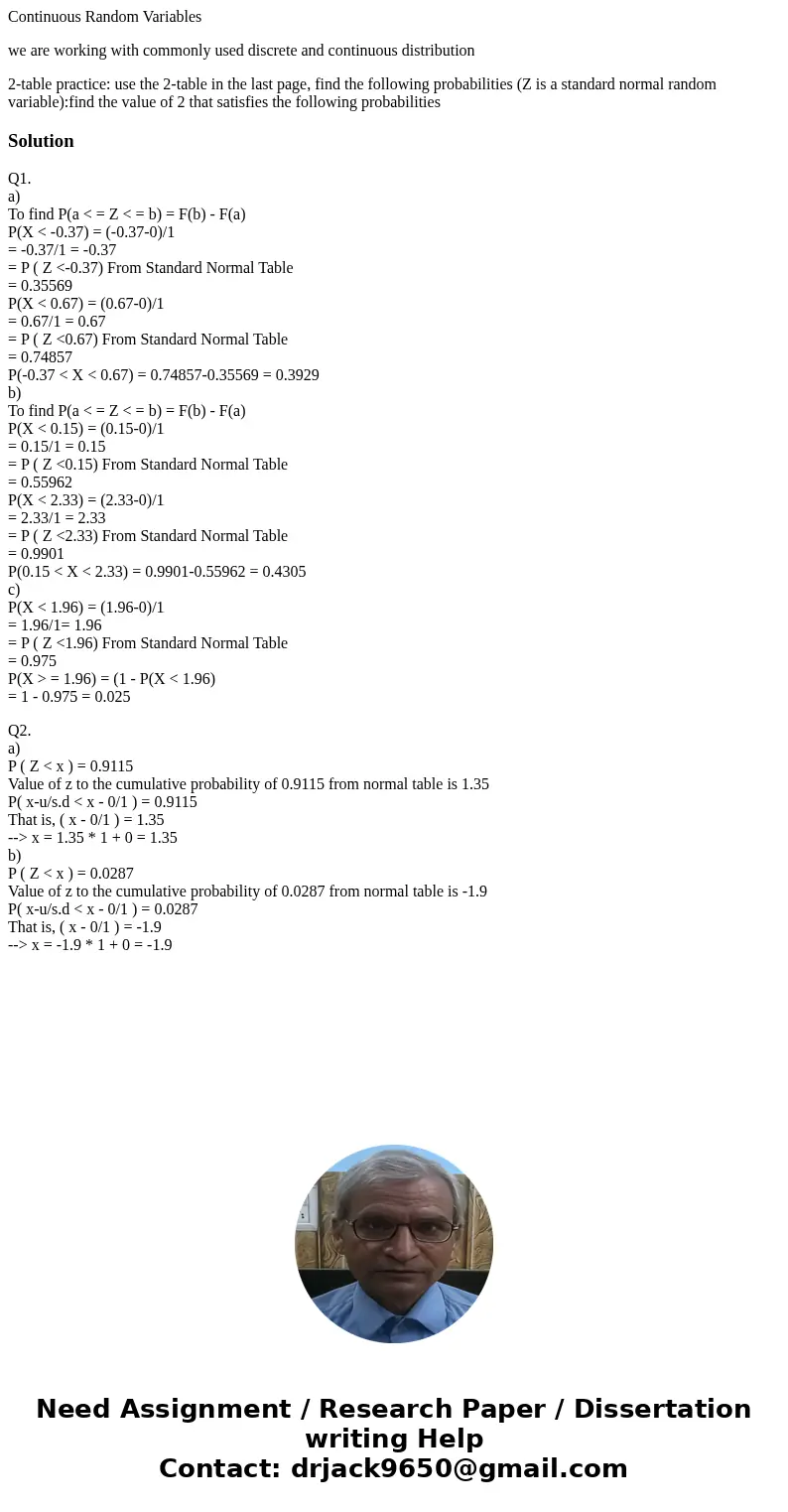Continuous Random Variables we are working with commonly use
Continuous Random Variables
we are working with commonly used discrete and continuous distribution
2-table practice: use the 2-table in the last page, find the following probabilities (Z is a standard normal random variable):find the value of 2 that satisfies the following probabilitiesSolution
Q1.
a)
To find P(a < = Z < = b) = F(b) - F(a)
P(X < -0.37) = (-0.37-0)/1
= -0.37/1 = -0.37
= P ( Z <-0.37) From Standard Normal Table
= 0.35569
P(X < 0.67) = (0.67-0)/1
= 0.67/1 = 0.67
= P ( Z <0.67) From Standard Normal Table
= 0.74857
P(-0.37 < X < 0.67) = 0.74857-0.35569 = 0.3929
b)
To find P(a < = Z < = b) = F(b) - F(a)
P(X < 0.15) = (0.15-0)/1
= 0.15/1 = 0.15
= P ( Z <0.15) From Standard Normal Table
= 0.55962
P(X < 2.33) = (2.33-0)/1
= 2.33/1 = 2.33
= P ( Z <2.33) From Standard Normal Table
= 0.9901
P(0.15 < X < 2.33) = 0.9901-0.55962 = 0.4305
c)
P(X < 1.96) = (1.96-0)/1
= 1.96/1= 1.96
= P ( Z <1.96) From Standard Normal Table
= 0.975
P(X > = 1.96) = (1 - P(X < 1.96)
= 1 - 0.975 = 0.025
Q2.
a)
P ( Z < x ) = 0.9115
Value of z to the cumulative probability of 0.9115 from normal table is 1.35
P( x-u/s.d < x - 0/1 ) = 0.9115
That is, ( x - 0/1 ) = 1.35
--> x = 1.35 * 1 + 0 = 1.35
b)
P ( Z < x ) = 0.0287
Value of z to the cumulative probability of 0.0287 from normal table is -1.9
P( x-u/s.d < x - 0/1 ) = 0.0287
That is, ( x - 0/1 ) = -1.9
--> x = -1.9 * 1 + 0 = -1.9

 Homework Sourse
Homework Sourse